






News
Stone tools in Ukraine - by cronywell 07/03/2024 » 12:41
Stone tools in Ukraine offer oldest evidence of humans in Europe
March 6 (Reuters) - A dating method based on cosmic rays has identified stone tools found in western Ukraine as the oldest-known evidence of human occupation in Europe - 1.4 million years ago - showing that the peopling of the continent occurred hundreds of thousands of years earlier than previously known.

Korolevo quarry in western Ukraine, surrounded by archaeological sites is pictured in Korolevo, Ukraine. Korolevo stone artefacts dating to about 1.4 million years ago are considered the earliest-known evidence of human presence in Europe.
Researchers said on Wednesday the stone tools - the most primitive kind known - were initially unearthed in the 1970s near the town of Korolevo in the Carpathian foothills along the Tysa river, close to Ukraine's borders with Hungary and Romania. But their age had remained unclear.
The new method determined the age of the sediment layer containing the stone tools, making this site critical for understanding how humans first spread into Europe during warm spells - called interglacial periods - that interrupted the Ice Age's grip on the continent.
The researchers concluded that the maker of the tools likely was Homo erectus, an early human species that arose roughly 2 million years ago and spread across Africa, Asia and Europe before disappearing perhaps 110,000 years ago.
"No bones were found at Korolevo, only stone tools. But the age suggests that Homo erectus was the only possible human species at the time. We know very little about our earliest ancestors. They used stone tools for butchery and probably used fire," said Czech Academy of Sciences archeologist Roman Garba, lead author of the research published in the journal Nature.
Homo erectus was the first member of our evolutionary lineage with body proportions similar to our species, Homo sapiens, though with a smaller brain.
The tools, made of volcanic rock, were fashioned in what is called the Oldowan style. While quite simple - flaked tools such as choppers, scrapers or basic cutting instruments - they represent the dawn of human technology.
Until now, the oldest-known evidence of humans in Europe was about 1.2-1.1 million years old from a site called Atapuerca in Spain.
The Korolevo findings provide insight into the route of the first human expansion into Europe. Homo erectus fossils from 1.8 million years ago are known from a Caucasus site in Georgia called Dmanisi. Coupled with Korolevo, this suggests Homo erectus entered Europe from the east or southeast, migrating along the Danube river, Garba said.
"Korolevo is the northernmost outpost found so far of what we presume to be Homo erectus and is testimony to the intrepidness of this ancestor," Czech Academy of Sciences geoscientist and study co-author John Jansen added.
It has been notoriously difficult to determine the age of Paleolithic sites like Korolevo. The study dated the tools, left by their makers on a river bed, by determining when the layer bearing the artifacts was buried under overlaying sediment.
"Earth is constantly bombarded by galactic cosmic rays. When these rays - mainly protons and alpha particles - penetrate Earth's atmosphere, they generate a secondary shower of particles - neutrons and muons - that, in turn, penetrates into the subsurface," geoscientist and study co-author Mads Knudsen of Aarhus University in Denmark said.
These particles react with minerals in rocks to produce radioactive nuclides, a class of atoms. The sediment was dated based on the ratio of two nuclides, thanks to their differing pace of radioactive decay.
Europe was later colonized by other now-extinct human species including Homo heidelbergensis and Neanderthals. Homo sapiens evolved in Africa roughly 300,000 years ago, arriving in significant numbers in Europe perhaps around 40,000-45,000 years ago.
The Homo erectus pioneers encountered a Europe inhabited by large mammals including mammoths, rhinos, hippos, hyenas and saber-toothed cats.
"Most likely they were scavengers, looking for carcasses left by hyenas or other predators, but what attracted them to Korolevo was a source of high-quality volcanic rock, very good for making stone tools," Garba said.
The researchers suspect evidence of European human occupation even older than Korolevo will turn up.
"The question is not 'if' but 'when' we will find a site of similar or older age somewhere else in Ukraine, Romania, Bulgaria or Serbia," Garba said.
Distant Galaxies - by cronywell 27/02/2024 » 17:23
Distant Galaxies
Galaxy cluster known as Abell 2744. The multinational project “Frontiers Fields” analyzed this area and found very interesting information, especially regarding the age and remoteness of the galaxies that comprise it.
To reach our telescopes, the light from this galaxy has traveled for around 13 billion years. This information is fundamental, because it means that we see Abell2744 as it was approximately 650 million years after the Big Bang. Which means that the observation of this galaxy can help us understand what the Universe was like in its first million years of existence.
The discovery was achieved thanks to the joint work of scientists from two Spanish institutions: the University of La Laguna (ULL), in Tenerife, and the Institute of Astrophysics of the Canary Islands (IAC).

OJOS AL ESPACIO - by cronywell 30/01/2024 » 20:45
OJOS AL ESPACIO
Sin duda la misión espacial más esperada no solo de 2024, sino del último medio siglo, será la Artemisa 2, que llevará a cuatro astronautas de la NASA —incluyendo una mujer y un hombre afroamericano— a sobrevolar la Luna, en el primer retorno tripulado al satélite terrestre desde el Apolo 17 en 1972. Será también la primera excursión del ser humano más allá de la órbita baja terrestre desde la cancelación del programa Apolo. La misión será el siguiente paso a la Artemisa 1, que en 2022 llevó una cápsula Orión sin tripulación a la órbita lunar. La NASA mantiene el objetivo de lanzar la misión en noviembre de 2024; sin embargo, analistas del sector sugieren que podría retrasarse si los daños sufridos por el escudo térmico de la Orión durante la Artemisa 1 obligaran a un rediseño sustancial.

Futuras misiones que deberán llevar de nuevo a los humanos al suelo lunar podrían también retrasarse respecto a los planes actuales dependiendo del progreso de las naves Starship de la compañía SpaceX del magnate Elon Musk, ya que Artemisa 3 utilizará una versión de esta nave para el alunizaje. Pero los dos intentos de vuelo orbital de la Starship en 2023 fracasaron, por lo que habrá que esperar los resultados de un nuevo lanzamiento anunciado para el primer trimestre de 2024. También en el campo de los operadores privados, la nave New Glenn de Blue Origin del magnate Jeff Bezos debería debutar por fin en la órbita terrestre.
Por lo demás, en el año que comienza no faltará actividad en el espacio. Aparte de Artemisa 2, la Luna será un objetivo preferente: varias sondas de la NASA, de las agencias espaciales de China y Japón y de compañías privadas tienen como meta nuestro satélite. Entre las misiones a otros destinos destaca la Europa Clipper de la NASA, con despegue previsto para el 10 de octubre y que orbitará en torno a Júpiter para estudiar su luna Europa, uno de los mundos más prometedores del Sistema Solar para la posible existencia de vida.
Largest fusion project - by cronywell 01/12/2023 » 12:08
Despite technical setbacks concerning key tokamak components, construction of the world's largest fusion experiment machine, the ITER Tokamak, continues in the department of Bouches-du-Rhone in southern France.
ITER stands for International Thermonuclear Experimental Reactor, and tokamak is a magnetic confinement device being developed to produce controlled thermonuclear fusion power.
"We are in the process of recovery from the issues in vacuum vessel sectors (dimensional non-conformities) and thermal shields (stress corrosion cracks in cooling pipes). We are on a good track," ITER Director General Pietro Barabaschi told Xinhua in a recent interview.
SETBACKS WILL BE OVERCOME
In the assembly building adjacent to the tokamak complex, work on the massive components of the ITER device continues in parallel with repair work that started in July.
In this vast workshop, where components are prepared before they are transported to the tokamak pit for installation, the faulty components already installed are being lifted out to be disassembled in order to prepare them for repairs.
"These technical setbacks are not fundamental. They are issues that will be overcome. It's not unusual but actually quite normal to have some setbacks in a project of this kind," Barabaschi said.
The 58-year-old Italian, who joined the ITER team in 1993 and began his tenure as director general of the ITER Organization in October 2022, stressed that "ITER is an extremely challenging project."
Conceived as the last experimental step to prove the feasibility of fusion as a large-scale and carbon-free source of energy based on the same principle that powers the Sun and the stars, ITER is designed to be the world's largest tokamak, with ten times the plasma volume of the largest tokamak operating today.
Three conditions must be fulfilled to achieve fusion in a laboratory: very high temperature (on the order of 150,000,000 degrees Celsius); sufficient plasma particle density (to increase the likelihood that collisions do occur); and sufficient confinement time (to hold the plasma, which has a propensity to expand, within a defined volume).
MANY RISKS AHEAD
The ITER Tokamak will weigh 23,000 tonnes, equal to three Eiffel Towers. The vacuum vessel alone, with its ports, blanket and diverter, weighs 8,000 tonnes. Approximately one million components will be integrated into this complex machine.
Also called the world's largest "artificial Sun," the ITER project has been a decades-long collaboration of its seven members -- China, the European Union, India, Japan, South Korea, Russia and the United States.
"A lot of key components have been delivered. Very important elements that are needed to start up the machine are available," Barabaschi said. "We are well ahead of half of the marathon. We have the finishing line in sight."
"It's not simply a marathon where you know the path and you want to keep up the pace with sustained motivation and determination," he explained. "It's navigation and exploration, which means we venture into an adventure, with many, many risks ahead."
ITER's previous target was to create the plasma by 2025. The duration and cost of the ongoing repairs cannot, at this stage, be precisely estimated. According to the director general, the situation will become clear by mid-2024 as his organization is preparing a new cost and schedule baseline for approval by council meeting at that time.
NOT JUST ITER
The electro-mechanical engineer who has dedicated virtually his entire career to fusion research believes that ITER will remain as the center of the growth of a fusion industry as global enthusiasm about the development of fusion energy reaches an all-time high.
"In the future of fusion, essentially driven by power intensity considerations, reactors will have to be relatively large, the size of ITER or maybe even larger," Barabaschi explained. "Only ITER can provide the experience of tokamak or a complex research infrastructure for future fusion of this size."
He welcomed the increase in public and private investment in fusion. "Fusion is not just ITER. Many others joining the fusion race is always good news. The more the merrier."
"ITER will remain as the center of the seven members' fusion research program. Then, the rest, particularly the investment from the private sector, we should cooperate with them to achieve our objective in the most effective way," he said.
KEY ROLE OF MATERIAL
Barabaschi also highlighted the key role material development plays in the success of fusion. "We can develop plasma, get the fire started, maybe tame the fire and make sure that it produces energy. But then we will need the materials that can take the energy of this fire," he said.
"An energy-producing fusion reactor would need very strong materials that can withstand the radiation coming from the plasma. If we don't take care of that, this exploration will not be leading to the final objective," Barabaschi said. ■
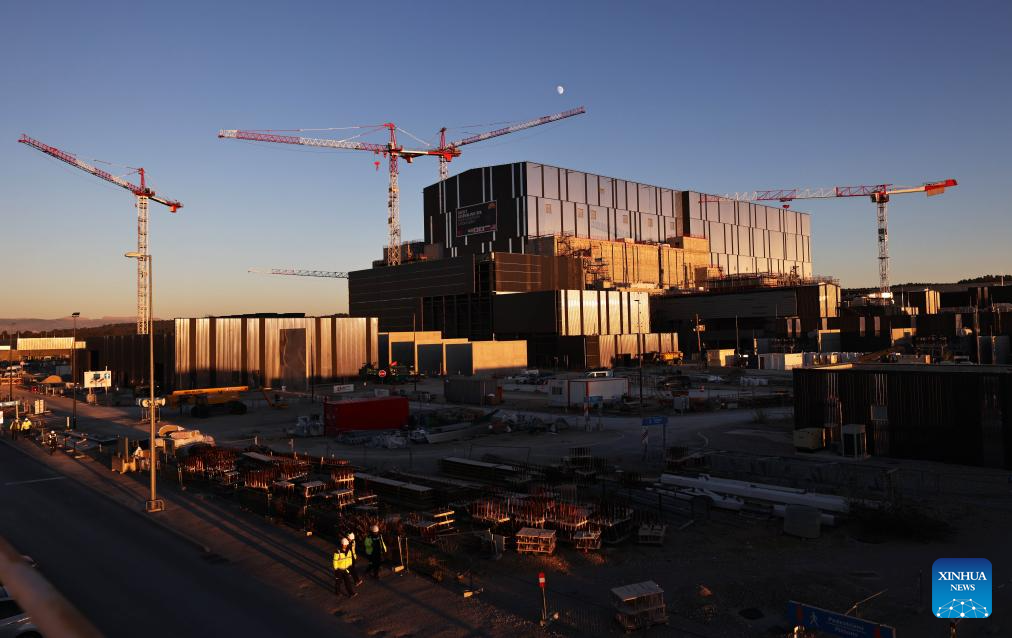
This photo taken on Nov. 23, 2023 shows the assembly building on the construction site of the ITER Tokamak, the world's largest fusion experiment machine, in Saint-Paul-lez-Durance, France. (Xinhua/Gao Jing)
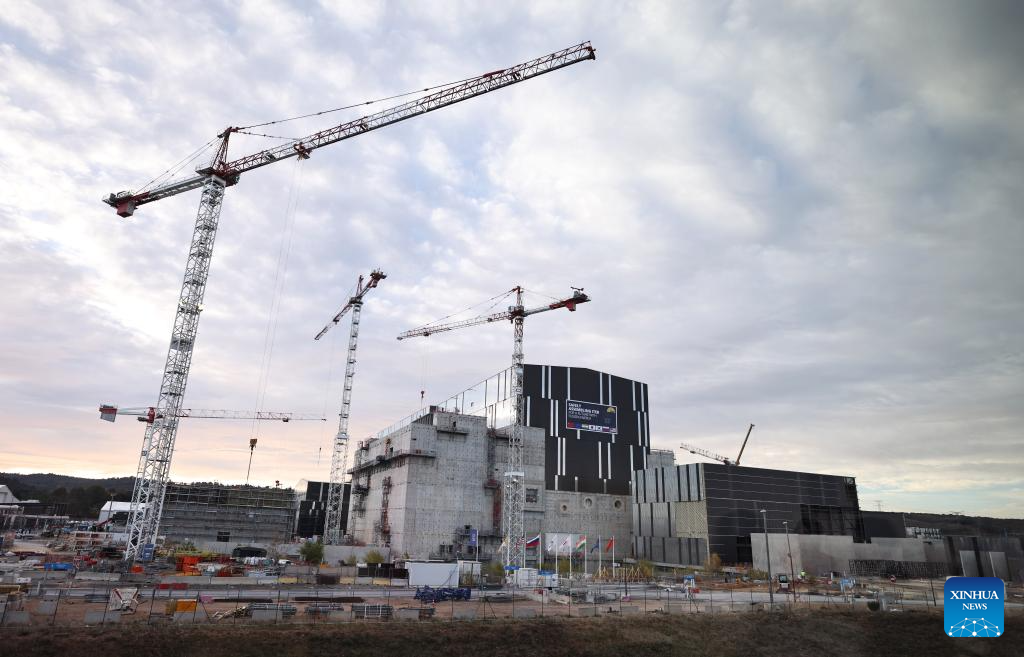
This photo taken on Nov. 24, 2023 shows the assembly building on the construction site of the ITER Tokamak, the world's largest fusion experiment machine, in Saint-Paul-lez-Durance, France. (Xinhua/Gao Jing)

A vast device is seen at a preassembly hall of the world's largest fusion experiment machine, the ITER Tokamak, in St Paul-Lez-Durance, France, Nov. 23, 2023. (Xinhua/Gao Jing)

Technicians check faulty vacuum vessel sectors in the vast preassembly hall on the construction site of the ITER Tokamak in St Paul-Lez-Durance, southern France, Nov. 23, 2023. (Xinhua/Gao Jing)
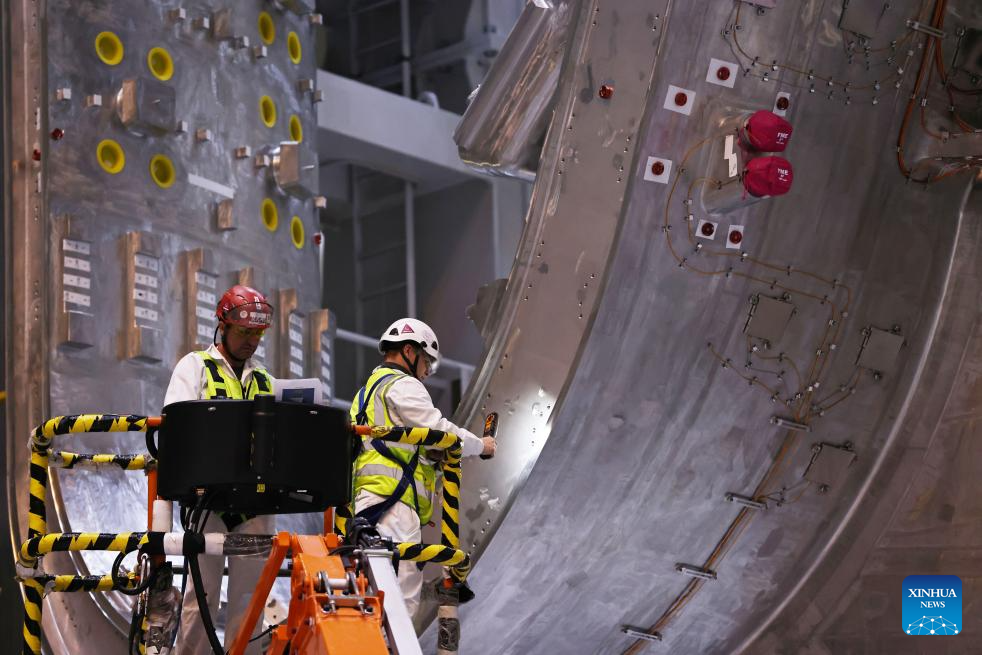
Technicians check faulty vacuum vessel sectors in the vast preassembly hall on the construction site of the ITER Tokamak in St Paul-Lez-Durance, southern France, Nov. 23, 2023. (Xinhua/Gao Jing)

People work at a preassembly hall of the world's largest fusion experiment machine, the ITER Tokamak, in St Paul-Lez-Durance, France, Nov. 23, 2023. (Xinhua/Gao Jing)
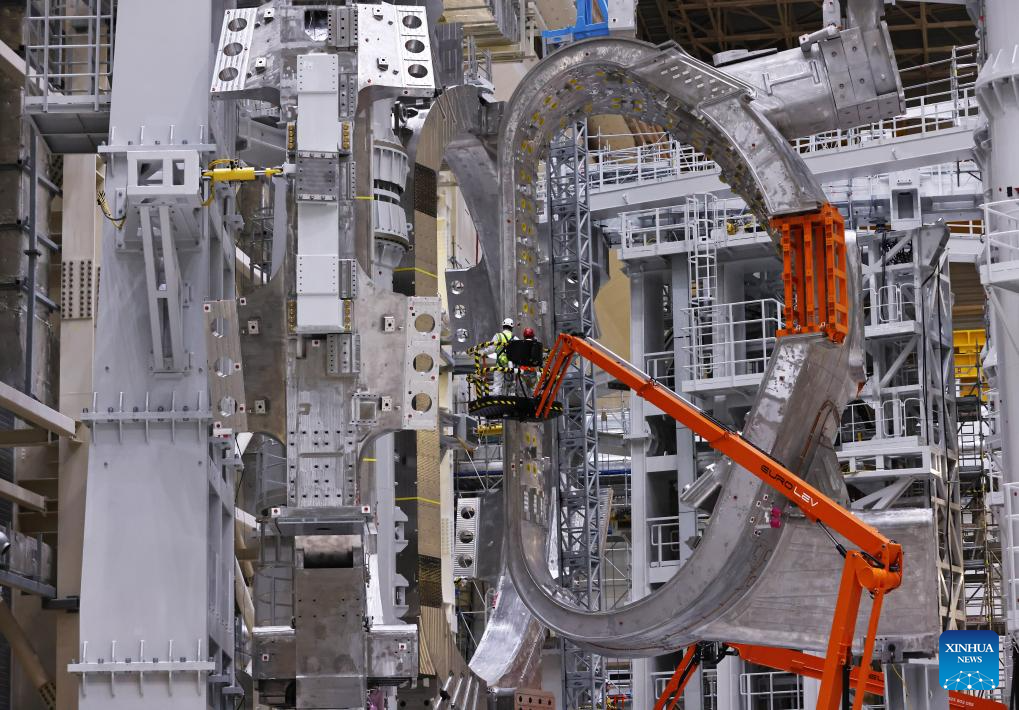
Technicians check faulty vacuum vessel sectors in the vast preassembly hall on the construction site of the ITER Tokamak in St Paul-Lez-Durance, southern France, Nov. 24, 2023. (Xinhua/Gao Jing)

This photo taken on Nov. 23, 2023 shows the assembly building on the construction site of the ITER Tokamak, the world's largest fusion experiment machine, in Saint-Paul-lez-Durance, France. (Xinhua/Gao Jing)
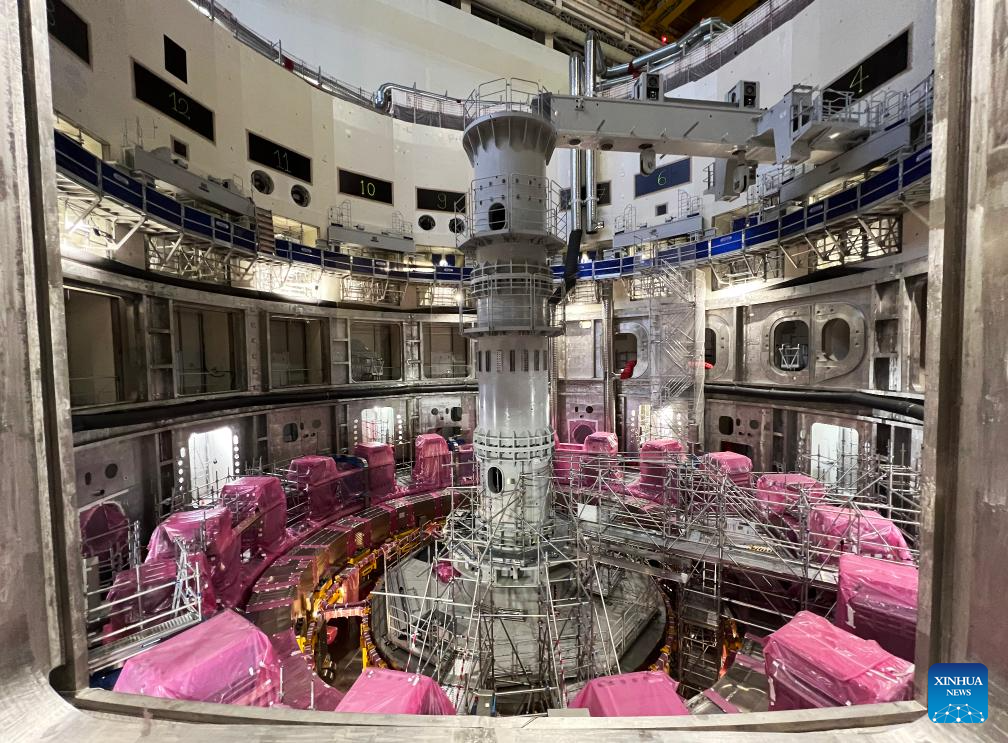
This photo taken on Nov. 23, 2023 shows the tokamak pit on the construction site of the ITER Tokamak in St Paul-Lez-Durance, southern France. (Xinhua/Gao Jing)
World's Largest Iceberg Breaks Free - by cronywell 24/11/2023 » 17:24
The world's largest iceberg is on the move for the first time in more than three decades, scientists said on Friday.
At almost 4,000 square km (1,500 square miles), the Antarctic iceberg called A23a is roughly three times the size of New York City.
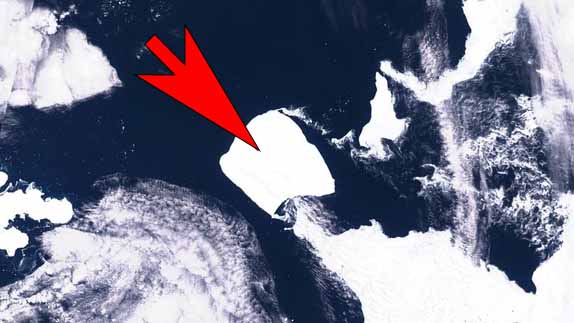
Since calving off West Antarctica's Filchner-Ronne Ice Shelf in 1986, the iceberg — which once hosted a Soviet research station — has largely been stranded after its base became stuck on the floor of the Weddell Sea.
Not anymore. Recent satellite images reveal that the berg, weighing nearly a trillion metric tonnes, is now drifting quickly past the northern tip of the Antarctic Peninsula, aided by strong winds and currents.
It's rare to see an iceberg of this size on the move, said British Antarctic Survey glaciologist Oliver Marsh, so scientists will be watching its trajectory closely.
As it gains steam, the colossal berg will likely be launched into the Antarctic Circumpolar Current. This will funnel it toward the Southern Ocean on a path known as "iceberg alley" where others of its kind can be found bobbing in dark waters.
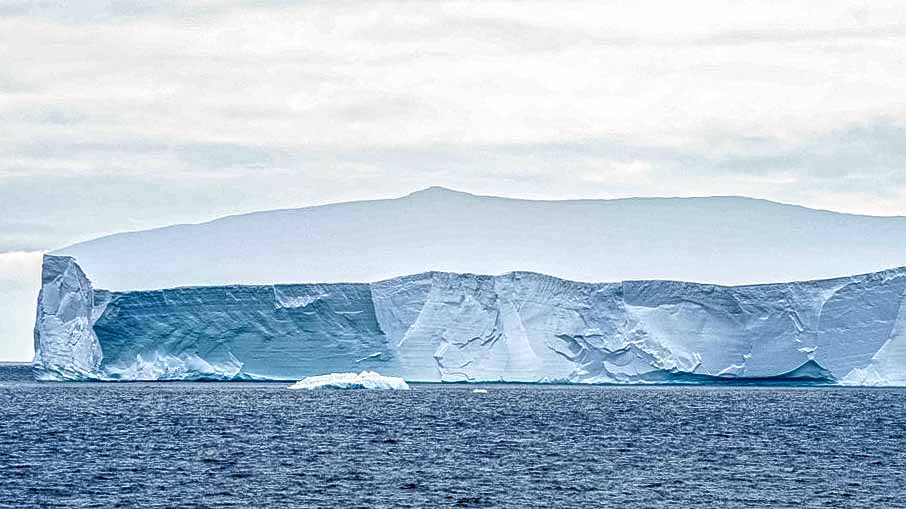
Why the berg is making a run for it now remains to be seen.
"Over time it's probably just thinned slightly and got that little bit of extra buoyancy that's allowed it to lift off the ocean floor and get pushed by ocean currents," said Marsh. A23a is also among the world's oldest icebergs.
It's possible A23a could again become grounded at South Georgia island. That would pose a problem for Antarctica's wildlife. Millions of seals, penguins, and seabirds breed on the island and forage in the surrounding waters. Behemoth A23a could cut off such access.
In 2020, another giant iceberg, A68, stirred fears that it would collide with South Georgia, crushing marine life on the sea floor and cutting off food access. Such a catastrophe was ultimately averted when the iceberg broke up into smaller chunks — a possible end game for A23a as well.
But "an iceberg of this scale has the potential to survive for quite a long time in the Southern Ocean, even though it's much warmer, and it could make its way farther north up toward South Africa where it can disrupt shipping," said Marsh.
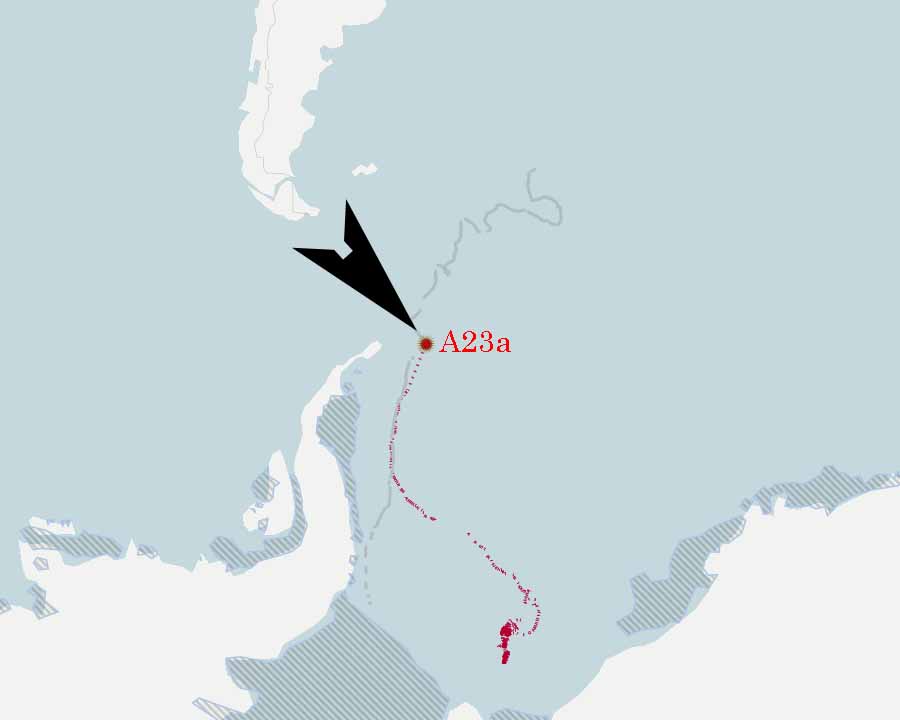
Elections 2023 Balotaje - by cronywell 20/11/2023 » 13:58
Javier Milei, a far-right libertarian who's been compared to former President Donald Trump, was elected Argentina's new president Sunday night to lead the country for the next four years.
Milei, who famously carried a chainsaw to campaign events and called himself "King of the Jungle," is a former frontman of a Rolling Stones cover band and television pundit. In 2021, he was elected to Argentina's congress.
His campaign focused on an economic overhaul that involved cutting spending and closing Argentina's central bank and replacing it with U.S. currency. Some of his other ideas to address the crisis include charging fees for healthcare, xxxx
The election outcome is likely to make a significant impact on Argentina as the country battles through a historic economic crisis with sky-high inflation and the peso losing half of its value this year.
Milei was running against left-leaning Sergio Massa, who served as the country's economy minister. Both men went into the race on Sunday at a dead heat. Massa conceded before the final votes were tallied.

Milei's brash style and conspiracy theories have drawn comparisons to former President Donald Trump. Days before the election, Milei's party, Freedom Advances, alleged fraud, calling the election rigged. Sebastian Schimmel, of the National Electoral Chamber, dismissed the accusations, saying it was "completely unfounded, as they are not even supported by arguments. Nevertheless, they create an atmosphere that aims to instill mistrust."
Massa, a former mayor, congressman and a presidential cabinet chief, was known as a pragmatist with leaning that swing from the right to the left. During his campaign, he tried to woo voters with promises of tax cuts and his ability to run the government. In July 2022, he was appointment economy minister. Inflation has since soared and the peso plummeted. Today, $1 buys 950 pesos. Before the election, many Argentinians expressed concern over his ability to handle economic matters.
The National Electoral Chamber opened more than 106,000 polling stations throughout the country. Voting was mandatory for anyone 18 to 70 and optional for children age 16 and 17, anyone over 71 and residents living abroad.
NASA Telescopes Discover Record-Breaking Black Hole. - by cronywell 07/11/2023 » 20:35
Astronomers have discovered the most distant black hole yet seen in X-rays, using NASA telescopes. The black hole is at an early stage of growth that had never been witnessed before, where its mass is similar to that of its host galaxy.
This result may explain how some of the first supermassive black holes in the universe formed.
By combining data from NASA’s Chandra X-ray Observatory and NASA’s James Webb Space Telescope, a team of researchers was able to find the telltale signature of a growing black hole just 470 million years after the big bang.
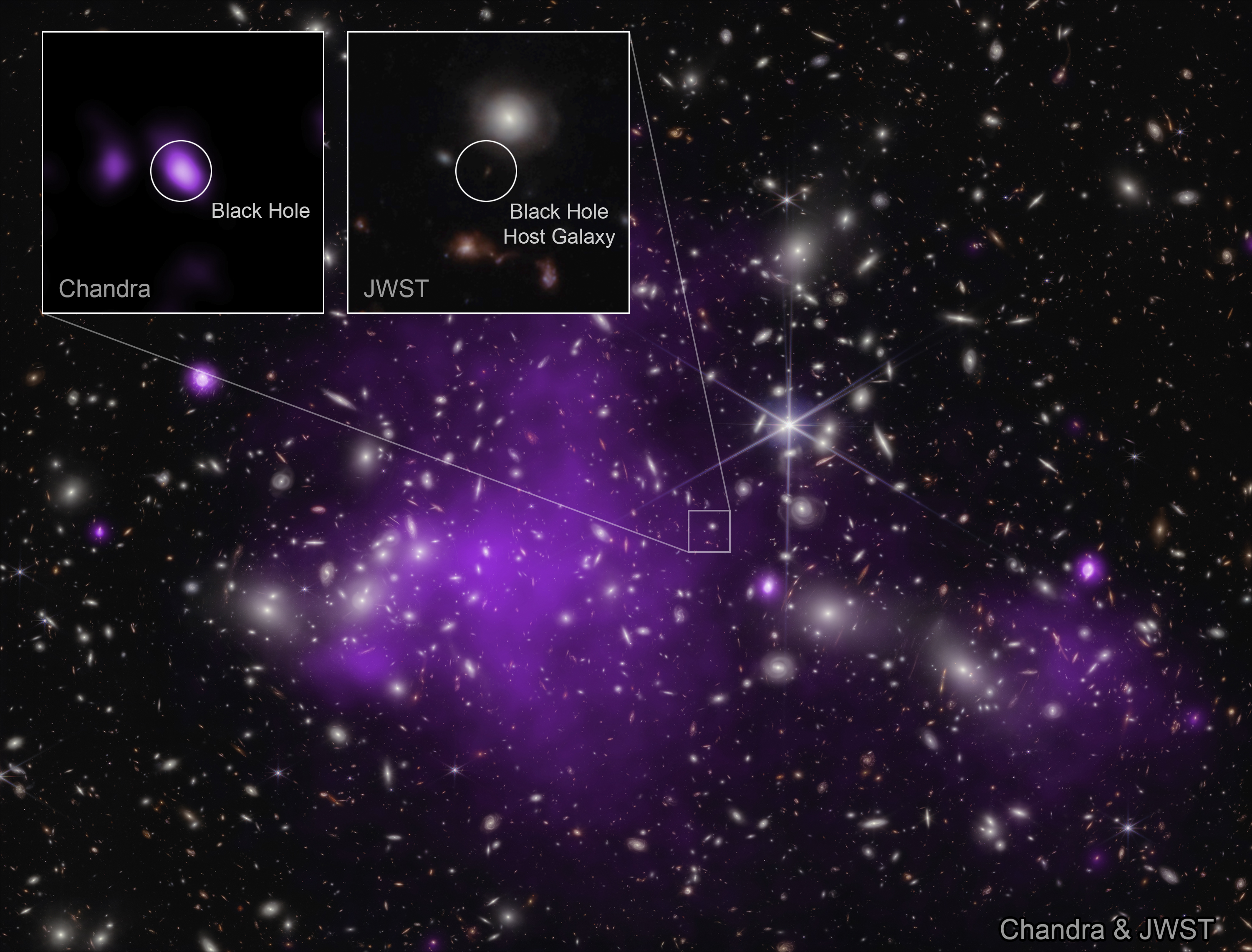
Astronomers found the most distant black hole ever detected in X-rays (in a galaxy dubbed UHZ1) using the Chandra and Webb space telescopes. X-ray emission is a telltale signature of a growing supermassive black hole. This result may explain how some of the first supermassive black holes in the universe formed. These images show the galaxy cluster Abell 2744 that UHZ1 is located behind, in X-rays from Chandra and infrared data from Webb, as well as close-ups of the black hole host galaxy UHZ1.
X-ray: NASA/CXC/SAO/Ákos Bogdán; Infrared: NASA/ESA/CSA/STScI; Image Processing: NASA/CXC/SAO/L. Frattare & K. Arcand
See full image
“We needed Webb to find this remarkably distant galaxy and Chandra to find its supermassive black hole,” said Akos Bogdan of the Center for Astrophysics | Harvard & Smithsonian (CfA) who leads a new paper in the journal Nature Astronomy describing these results. “We also took advantage of a cosmic magnifying glass that boosted the amount of light we detected.” This magnifying effect is known as gravitational lensing.
Bogdan and his team found the black hole in a galaxy named UHZ1 in the direction of the galaxy cluster Abell 2744, located 3.5 billion light-years from Earth. Webb data, however, has revealed the galaxy is much more distant than the cluster, at 13.2 billion light-years from Earth, when the universe was only 3% of its current age.
Then over two weeks of observations with Chandra showed the presence of intense, superheated, X-ray emitting gas in this galaxy – a trademark for a growing supermassive black hole. The light from the galaxy and the X-rays from gas around its supermassive black hole are magnified by about a factor of four by intervening matter in Abell 2744 (due to gravitational lensing), enhancing the infrared signal detected by Webb and allowing Chandra to detect the faint X-ray source.
This discovery is important for understanding how some supermassive black holes can reach colossal masses soon after the big bang. Do they form directly from the collapse of massive clouds of gas, creating black holes weighing between about 10,000 and 100,000 Suns? Or do they come from explosions of the first stars that create black holes weighing only between about 10 and 100 Suns?
“There are physical limits on how quickly black holes can grow once they’ve formed, but ones that are born more massive have a head start. It’s like planting a sapling, which takes less time to grow into a full-size tree than if you started with only a seed”, said Andy Goulding of Princeton University. Goulding is a co-author of the Nature Astronomy paper and lead author of a new paper in The Astrophysical Journal Letters that reports the galaxy’s distance and mass using a spectrum from Webb.
Bogdan’s team has found strong evidence that the newly discovered black hole was born massive. Its mass is estimated to fall between 10 and 100 million Suns, based on the brightness and energy of the X-rays. This mass range is similar to that of all the stars in the galaxy where it lives, which is in stark contrast to black holes in the centers of galaxies in the nearby universe that usually contain only about a tenth of a percent of the mass of their host galaxy’s stars.
The large mass of the black hole at a young age, plus the amount of X-rays it produces and the brightness of the galaxy detected by Webb, all agree with theoretical predictions in 2017 by co-author Priyamvada Natarajan of Yale University for an “Outsize Black Hole” that directly formed from the collapse of a huge cloud of gas.
“We think that this is the first detection of an ‘Outsize Black Hole’ and the best evidence yet obtained that some black holes form from massive clouds of gas,” said Natarajan. “For the first time we are seeing a brief stage where a supermassive black hole weighs about as much as the stars in its galaxy, before it falls behind.”
The researchers plan to use this and other results pouring in from Webb and those combining data from other telescopes to fill out a larger picture of the early universe.
NASA’s Hubble Space Telescope previously showed that light from distant galaxies is highly magnified by matter in the intervening galaxy cluster, providing part of the motivation for the Webb and Chandra observations described here.
The paper describing the results by Bogdan’s team appears in Nature Astronomy, and a preprint is available online.
The Webb data used in both papers is part of a survey called the Ultradeep Nirspec and nirCam ObserVations before the Epoch of Reionization (UNCOVER). The paper led by UNCOVER team member Andy Goulding appears in the Astrophysical Journal Letters. The co-authors include other UNCOVER team members, plus Bogdan and Natarajan. A detailed interpretation paper that compares observed properties of UHZ1 with theoretical models for Outsize Black Hole Galaxies is forthcoming.
NASA’s Marshall Space Flight Center manages the Chandra program. The Smithsonian Astrophysical Observatory’s Chandra X-ray Center controls science operations from Cambridge, Massachusetts, and flight operations from Burlington, Massachusetts.
The James Webb Space Telescope is the world’s premier space science observatory. Webb is solving mysteries in our solar system, looking beyond to distant worlds around other stars, and probing the mysterious structures and origins of our universe and our place in it. Webb is an international program led by NASA with its partners, ESA (European Space Agency) and the Canadian Space Agency.
Link between marijuana use and heart attack - by cronywell 06/11/2023 » 11:39
New studies strengthen link between marijuana use and heart attack, heart failure and stroke.
Two new preliminary studies on recreational marijuana and health reinforce existing evidence that regular use has a negative impact on heart and brain health, according to the American Heart Association.
The first report, which was based on data from a major study involving more than 150,000 people from all walks of American society that examined the relationship between lifestyle, biology and the environment, found that consumption daily marijuana increased the risk of developing heart failure by approximately one-third compared to non-users. A research team from Medstar Health, a nonprofit health provider in the Baltimore-Washington metropolitan area, found that among 156,999 healthy people they followed, those who used marijuana had a 34 percent higher risk of develop heart failure during the 45 months of the study, compared to those who reported that they had never used marijuana. This risk was the same regardless of age, sex, or smoking history, and findings from the study, part of the National Institutes of Health's All of Us research program, suggested that coronary artery disease was the pathway through which daily marijuana use could lead to heart failure.
The total amount of debt has increased exorbitantly, and no one knows at what rates! - by cronywell 30/10/2023 » 20:36
The total amount of debt has increased exorbitantly, and no one knows at what rates!
Argentina's central bank said China has authorized a free-access currency swap line totaling $6.5 billion, part of a broader deal the country has been using to help defend the embattled local peso.
The agreement with China helps Argentina increase its depleted foreign currency reserves while it is going through a major economic crisis, with annual inflation exceeding 130% and the central bank's dollar reserves reaching negative levels.
Wednesday's measure effectively increases the amount that Argentina can access as part of the swap line formalized in early 2023.
"China has increased the amount and instead of 5 billion dollars we are receiving 6.5 billion dollars," said Alberto Fernández, from the Asian country, where he is on an official trip. "
Every time we went through difficult times, Xi Jinping's government gave us its support," Fernández added. "This is an important step so that production (in argentina) does not stop.
" This is the second line of exchange with China activated during Fernández's presidency. According to an official source from the bank, the total amount of the swap line amounted to 47 billion yuan.
The problem is that it is not said that it is a loan, and it accrues interest that no one knows about.
Fires in the province of Córdoba - by cronywell 11/10/2023 » 11:00
CÓRDOBA.– During the early hours of today, firefighters managed to contain the fires in the southern area of Punilla, in the province of Córdoba. The only active outbreak is in La Tomita, in the department of Tulumba, in the north. Yesterday was a day of anguish and despair because the heat, the wind rotations and the drought caused the flames to get out of control and take them to the edge of homes in the area of Carlos Paz, San Antonio de Arredondo and Cabalango.

The Secretary of Climate Risk Management of Córdoba, Claudio Vignetta, indicated that around 4 o'clock today the firefighters managed to contain the fire in Punilla. “At 4 o'clock some drops fell. We were working until 6 at El Fantasio, which was busy. “Everything is controlled, with an unstable perimeter,” he described.
In any case, he warned that there are planes flying over to audit the situation and ash guard. The little rain recorded cooled the land somewhat.
Last night the interim mayor of Cabalango, Carla Bruno, ordered the town to be evacuated. The flames caused an environmental disaster, in addition to the anguish and fear of the residents since the fire reached some houses and surrounded the Villa Piren complex. About 11 fire crews were deployed to the scene.

Yesterday afternoon, the most desperate situation was experienced in the vicinity of Villa Carlos Paz, where the flames gained strength and height. “If it weren't for the firefighters and the police, we would all burn. I have never seen anything like that in my life. We managed to put it out with everyone's help. The fire was almost inside my house and surrounded us,” Ana, a neighbor from the Altos del Valle neighborhood, told the media.
At least 800 people were transferred to Tanti, since the flames threatened residents and the density of the air made it impossible to breathe.
Document generated in 0.01 second


















